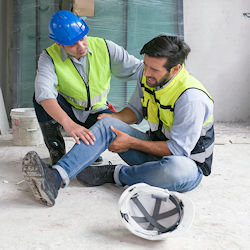Effective One-On-One Communication Techniques
One-on-one communication can occur in person, over the phone, or through digital means such as email or messaging apps.

It allows for a more personal and direct exchange of ideas, feedback, or information, and can be used for a variety of purposes, such as building relationships, resolving conflicts, giving feedback, or conveying important information.
This type of communication is often valued for its ability to establish trust, foster understanding, and promote effective communication. Below are important techniques and tips for effective one-on-one communications.
- Use facts, not opinions (make sure you know the facts).
- Use "I" statements ("You" statements put people on the defensive)
- Be direct and to the point (keep it in the here and now).
- Be consistent (repeat the same message to everyone, every time).
- Recognize good performance (both in productivity and safety).
- Be enthusiastic. We're not talking about wild enthusiasm, but an active interest in what's going on in the meeting. Encourage active discussions.
- Appoint a "devil's advocate."
- Be a traffic cop. It's important to stay on task. Fall back on the ground rules if need be.
- Use first names. No need to be formal during these meetings.
- Ask open-ended questions. This technique works best to determine what people think, how they feel, and what their opinions are.
- Actively listen. Active listening requires each person to listen to and then restate the statement in their own words, emphasizing the feelings expressed as well as the substance. The purpose is to confirm that the listener accurately understands the message sent and acknowledges that message, although the listener is not required to agree.
- Protect members from personal attack. Do not allow members to play the "blame game."
- Facilitate. Keep control of the meeting, but don't be domineering.
- Never ignore! It's the worst response and you can bet people don't like it.
Knowledge Check Choose the best answer for the question.
5-4. It is important for the safety committee chairperson to _____.
You forgot to answer the question!
